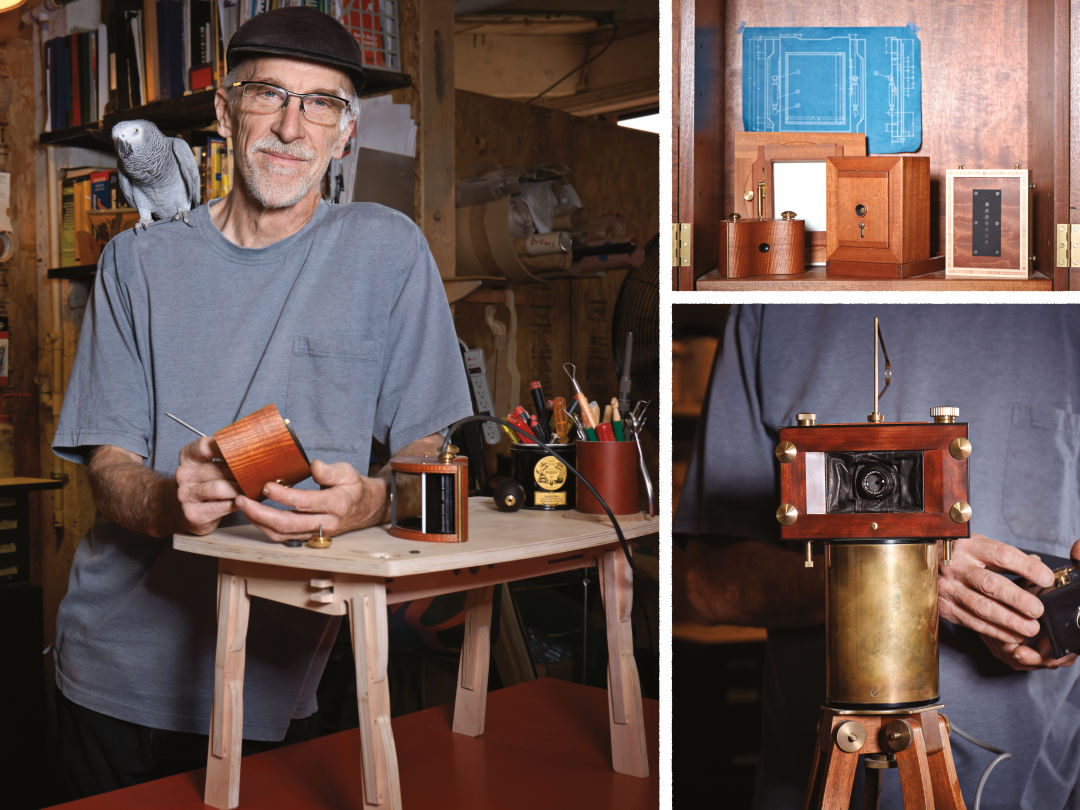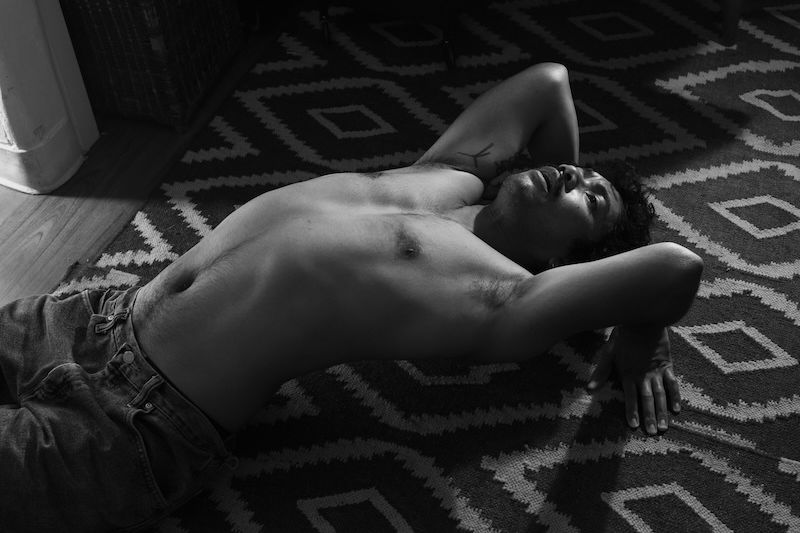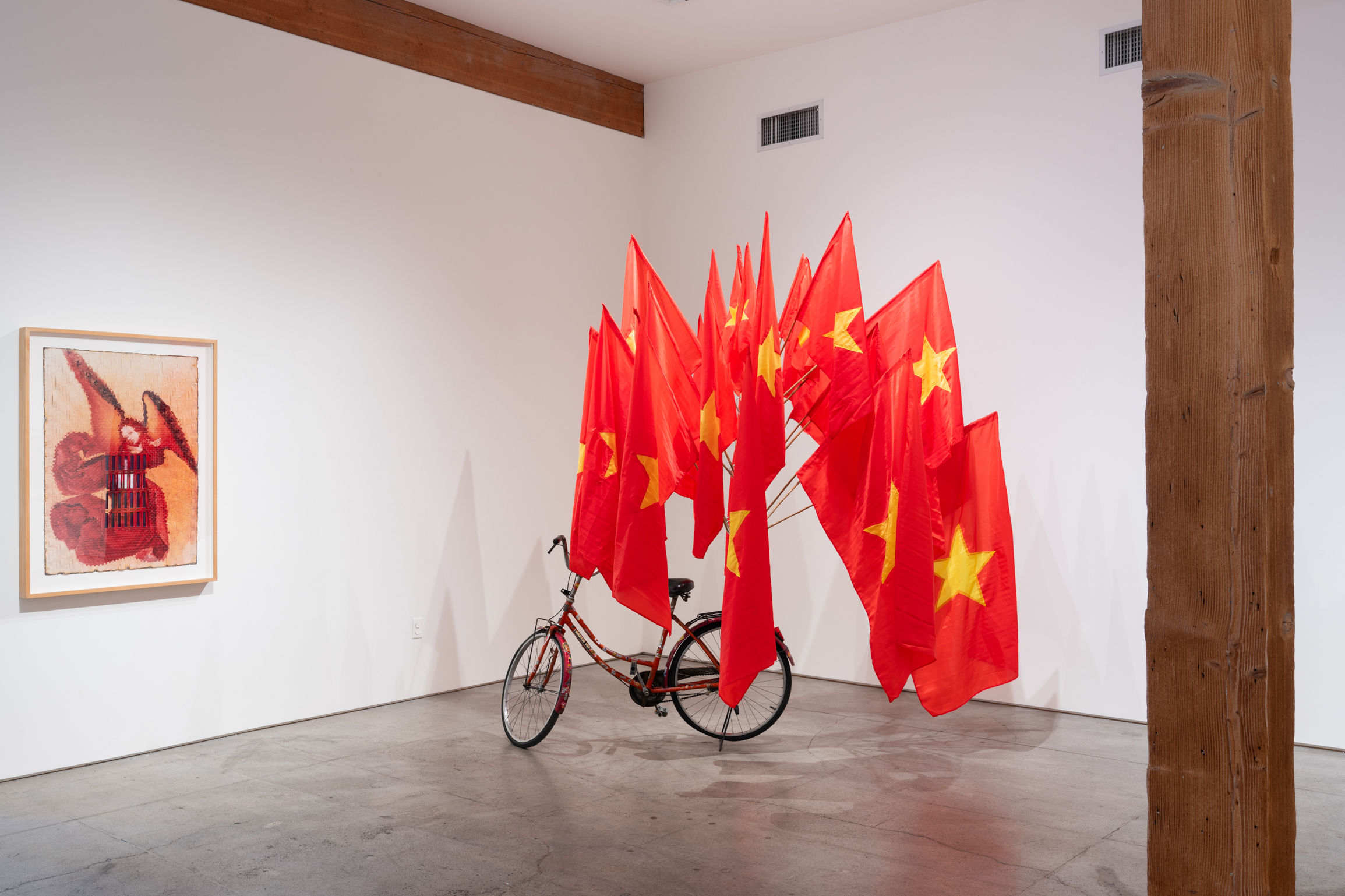Portlander Kurt Mottweiler Crafts Crazy-Cool Analog Cameras

CLOCKWISE FROM LEFT: Kurt Mottweiler and Zane, at work in Sullivan’s Gulch; a collection of the designer’s pinhole cameras; a swing-lens panoramic camera Mottweiler built in 1991, with its “Jules Verne–style” controller.
Image: Nicolle Clemetson
Growing up with a father who worked on and raced Porsches, Kurt Mottweiler spent a lot of time thumbing through magazines about European sports cars and admiring the luxury vehicles that occasionally appeared at the family’s San Antonio home.
“One time he brought home a Porsche Spyder,” Mottweiler recalls. “Really rare. Really beautiful. Really expensive. We had it in our garage for days.”
When Mottweiler, now 61, became a designer, he brought the sleek contours and streamlined shapes of high-end automobiles to his work. He works out of a Sullivan’s Gulch studio, where an African gray parrot named Zane provides a soundtrack of squawks and whistles. Though omnivorous in his interests—furniture design, lutherie, handmade laptops—he’s devoted most of the past 30 years to crafting detailed analog cameras. Mottweiler estimates he’s designed about 20 medium- and large-format cameras, from simple wooden pinhole box cameras that would be wholly recognizable to a photographer of the 1850s to high-tech, swing-lens panoramic cameras that unite retro aesthetics with modern electronics.
Most striking, though, are his wood-encased cameras. Take, for example, the P.90, a lensless camera that’s all graceful curves, beautifully polished cherry, and shiny, custom-made brass knobs (Gizmodo likened it to a “mysterious piece of nautical equipment”), or a panoramic pinhole camera with a gently undulating front surface.
Later this year: a camera that records 12-hour exposures—it will, he says, “photographically represent time.” For this builder, past and future will always connect.




